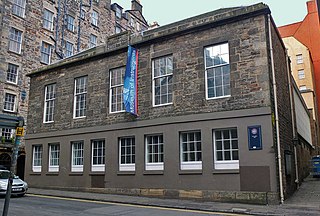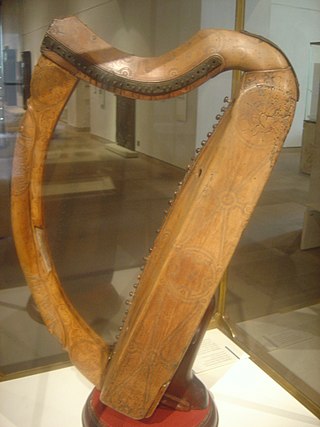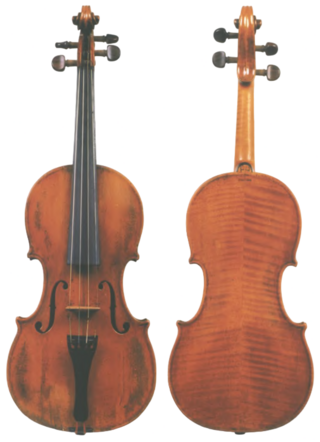Related Research Articles

Lyon & Healy Harps, Inc. is an American musical instrument manufacturer based in Chicago, Illinois and is a subsidiary of Salvi Harps. Today best known for concert harps, the company's Chicago headquarters and manufacturing facility contains a showroom and concert hall. George W. Lyon and Patrick J. Healy began the company in 1864 as a sheet music shop. By the end of the 19th century, they manufactured a wide range of musical instruments—including not only harps, but pianos, guitars, mandolins, banjos, ukuleles and various brass and other percussion instruments.

Scotland is internationally known for its traditional music, which remained vibrant throughout the 20th century and into the 21st when many traditional forms worldwide lost popularity to pop music. Despite emigration and a well-developed connection to music imported from the rest of Europe and the United States, the music of Scotland has kept many of its traditional aspects and influenced many other forms of music.

Scottish folk music is a genre of folk music that uses forms that are identified as part of the Scottish musical tradition. There is evidence that there was a flourishing culture of popular music in Scotland during the late Middle Ages, but the only song with a melody to survive from this period is the "Pleugh Song". After the Reformation, the secular popular tradition of music continued, despite attempts by the Kirk, particularly in the Lowlands, to suppress dancing and events like penny weddings. The first clear reference to the use of the Highland bagpipes mentions their use at the Battle of Pinkie Cleugh in 1547. The Highlands in the early seventeenth century saw the development of piping families including the MacCrimmons, MacArthurs, MacGregors and the Mackays of Gairloch. There is also evidence of adoption of the fiddle in the Highlands. Well-known musicians included the fiddler Pattie Birnie and the piper Habbie Simpson. This tradition continued into the nineteenth century, with major figures such as the fiddlers Niel and his son Nathaniel Gow. There is evidence of ballads from this period. Some may date back to the late Medieval era and deal with events and people that can be traced back as far as the thirteenth century. They remained an oral tradition until they were collected as folk songs in the eighteenth century.
The Scottish Renaissance was a mainly literary movement of the early to mid-20th century that can be seen as the Scottish version of modernism. It is sometimes referred to as the Scottish literary renaissance, although its influence went beyond literature into music, visual arts, and politics. The writers and artists of the Scottish Renaissance displayed a profound interest in both modern philosophy and technology, as well as incorporating folk influences, and a strong concern for the fate of Scotland's declining languages.

Silicon Glen is the nickname given to the high tech sector of Scotland, the name inspired by Silicon Valley in California. It is applied to the Central Belt triangle between Dundee, Inverclyde and Edinburgh, which includes Fife, Glasgow and Stirling; although electronics facilities outside this area may also be included in the term. The term has been in use since the 1980s. It does not technically represent a glen as it covers a much wider area than just one valley.

Loanhead is a town in Midlothian, Scotland, in a commuter belt to the south of Edinburgh, and close to Roslin, Bonnyrigg and Dalkeith. The town was built on coal and oil shale mining, and the paper industries.
Thomas Nelson is a publishing firm that began in West Bow, Edinburgh, Scotland, in 1798, as the namesake of its founder. It is a subsidiary of HarperCollins, the publishing unit of News Corp. It describes itself as a "world leading publisher and provider of Christian content".

The Distin family was an ensemble of British musicians in the 19th century who performed on brass instruments, and from 1845 promoted the saxhorn. One of them, Henry Distin, later became a noted brass instrument manufacturer in the United Kingdom and United States.
Boosey & Hawkes is a British music publisher, purported to be the largest specialist classical music publisher in the world. Until 2003, it was also a major manufacturer of brass, string and woodwind musical instruments.

Early music of Britain and Ireland, from the earliest recorded times until the beginnings of the Baroque in the 17th century, was a diverse and rich culture, including sacred and secular music and ranging from the popular to the elite. Each of the major nations of England, Ireland, Scotland, and Wales retained unique forms of music and of instrumentation, but British music was highly influenced by continental developments, while British composers made an important contribution to many of the major movements in early music in Europe, including the polyphony of the Ars Nova and laid some of the foundations of later national and international classical music. Musicians from the British Isles also developed some distinctive forms of music, including Celtic chant, the Contenance Angloise, the rota, polyphonic votive antiphons, and the carol in the medieval era and English madrigals, lute ayres, and masques in the Renaissance era, which would lead to the development of English language opera at the height of the Baroque in the 18th century.
Daniel Dow was a traditional Scottish fiddler, composer, teacher and concert organizer and one of the first musicians to publish music specifically for bagpipes. He is credited as both Daniel and Donald, both acceptable translations for the Gaelic name of 'Domhnull'.
Dr David Charles Johnson was a Scottish composer and a scholar of 18th century Scottish music. Johnson was "an internationally recognised scholar", whose work did much to rediscover and reinvent 18th century Scottish music, and set it in its historical context. Johnson’s work concentrated on the music and wider social life of 18th century lowland Scotland, its influences and tastes, and the key musical figures within it.

St Cecilia's Hall is a small concert hall and museum in the city of Edinburgh, Scotland, in the United Kingdom. It is on the corner of Niddry Street and the Cowgate, about 168 metres (551 ft) south of the Royal Mile. The hall dates from 1763 and was the first purpose-built concert hall in Scotland. It is a Category A listed building.
George Small (1782–1861) was a partner of the Scottish piano manufacturing firm of Muir, Wood and Company, an Edinburgh magistrate and a philanthropist.

John Muir Wood, was a Scottish musician, piano maker, music publisher and an early amateur photographer.

Music in early modern Scotland includes all forms of musical production in Scotland between the early sixteenth century and the mid-eighteenth century. In this period the court followed the European trend for instrumental accompaniment and playing. Scottish monarchs of the sixteenth century were patrons of religious and secular music, and some were accomplished musicians. In the sixteenth century the playing of a musical instrument and singing became an expected accomplishment of noble men and women. The departure of James VI to rule in London at the Union of Crowns in 1603, meant that the Chapel Royal, Stirling Castle largely fell into disrepair and the major source of patronage was removed from the country. Important composers of the early sixteenth century included Robert Carver and David Peebles. The Lutheranism of the early Reformation was sympathetic to the incorporation of Catholic musical traditions and vernacular songs into worship, exemplified by The Gude and Godlie Ballatis (1567). However, the Calvinism that came to dominate Scottish Protestantism led to the closure of song schools, disbanding of choirs, removal of organs and the destruction of music books and manuscripts. An emphasis was placed on the Psalms, resulting in the production of a series of Psalters and the creation of a tradition of unaccompanied singing.

Music in Medieval Scotland includes all forms of musical production in what is now Scotland between the fifth century and the adoption of the Renaissance in the early sixteenth century. The sources for Scottish Medieval music are extremely limited. There are no major musical manuscripts for Scotland from before the twelfth century. There are occasional indications that there was a flourishing musical culture. Instruments included the cithara, tympanum, and chorus. Visual representations and written sources demonstrate the existence of harps in the Early Middle Ages and bagpipes and pipe organs in the Late Middle Ages. As in Ireland, there were probably filidh in Scotland, who acted as poets, musicians and historians. After this "de-gallicisation" of the Scottish court in the twelfth century, a less highly regarded order of bards took over the functions of the filidh and they would continue to act in a similar role in the Scottish Highlands and Islands into the eighteenth century.

The Reid Concert Hall is a small music venue in the city of Edinburgh, Scotland. It is located in the south-western corner of Bristo Square about 0.53 kilometres (0.33 mi) south of the Royal Mile, and is part of the University of Edinburgh. Originally opened in 1859 as the Reid School of Music by the university's professor of music, John Donaldson (1789-1865), it was designed by the Scottish Architect David Cousin and is a Category A listed building. The hall is named after General John Reid, an army officer and musician who founded the Chair of Music at the university. The Reid Concerts take place every 13 February.

John Mackintosh was a luthier, author and maker of violins from Dublin. Towards the end of his career, he wrote a short publication on violin making and the Cremonese school, where he claims to have rediscovered their forgotten technique of wood preservation. One of his violins is preserved as part of a collection at the National Museum of Ireland, Dublin.
References
- 1 2 David Johnson; Arnold Myers (2001). "Glen". Grove Music Online. Oxford University Press. doi:10.1093/gmo/9781561592630.article.11276.